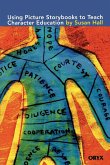Virtue education is often framed in the philosophy literature as consisting of a number of discrete tactics, such as virtue-labeling, exemplar exposure, and nudging, with little regard for the level of maturity of the learner. This is a problem because age, life experiences, and growth in emotional and intellectual maturity impact how we respond to moral instruction. Furthermore, in the current virtue education literature, we lack a coherent narrative for how to advance a learner from natural character to moral virtue. developing the learner's moral agency along the way. Ideally, virtue education tactics should build on one another over time. They should of course be age-appropriate, but they should also actively mature the learner, inviting her to rationally participate in her own habituation so that she becomes the sort of person who can choose well for herself. The goal of this project is to propose a developmental sequence for one particular avenue of moral education-learning about and being motivated to acquire virtues by way of aretaic exemplars,







